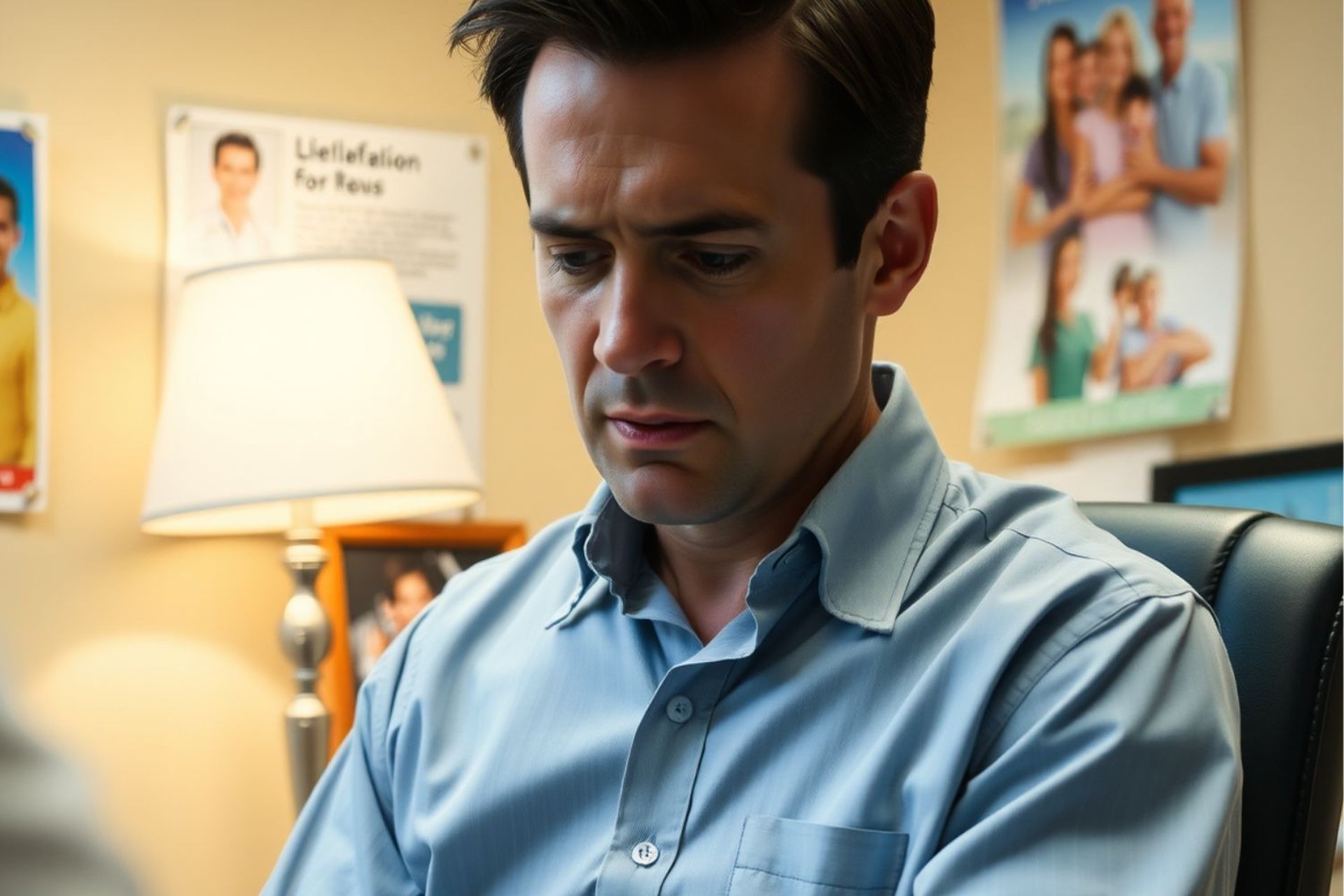
Male Incontinence: Causes, Types & Effective Treatment Options
Worried about leaks? Learn the causes, types, and treatments for male incontinence. This guide covers lifestyle changes and medical options, helping men take control of their urinary health and improve their quality of life.
INCONTINENCE CARE
Introduction
Have you ever felt a sudden urge to go to the bathroom, or worried about leaks during exercise? You're not alone. Many people experience bladder issues, but the good news is that pelvic floor exercises, often called Kegels, can be incredibly effective in regaining control and improving your quality of life.
This article will delve into the world of pelvic floor health, providing you with a clear understanding of how these muscles work, why they're so important, and how to strengthen them effectively. We'll explore various pelvic floor muscle training techniques, discuss their benefits beyond bladder control, and offer practical tips for incorporating Kegels into your daily routine.
Whether you're seeking relief from incontinence, want to enhance your sexual health, or simply aim to improve your overall well-being, this guide is your roadmap to a stronger pelvic floor and a healthier you.
Table of Contents


The Jogger's Dilemma: Mark, battling stress incontinence, felt panic during his run. Trying to control his pace, he had to stop, feeling disappointment and fear of a leak.
Understanding Male Incontinence
Male incontinence encompasses a range of conditions characterized by involuntary urine leakage. It's not simply a normal part of aging, but rather a symptom that requires attention. Common misconceptions often surround male incontinence, leading to embarrassment and silence. It's essential to remember that you are not alone, and effective treatment options exist.
Types of Male Incontinence
Stress Incontinence: Leakage occurs during activities like coughing, sneezing, laughing, or exercise due to pressure on the bladder.
Urge Incontinence: A sudden, strong urge to urinate followed by involuntary leakage. This is often associated with an overactive bladder.
Overflow Incontinence: Frequent dribbling or leaking due to a constantly full bladder that doesn't empty completely.
Impact on Daily Life and Psychological Effects
Male incontinence can significantly impact daily life, causing limitations in social activities, work performance, and overall well-being. It can lead to feelings of embarrassment, shame, and isolation. Seeking help is crucial for managing both the physical and emotional aspects of this condition.
Exploring the Root Causes
Prostate-Related Issues: An enlarged prostate (Benign Prostatic Hyperplasia - BPH) can compress the urethra, obstructing urine flow and leading to incontinence. Prostate surgery can also impact bladder control.
Neurological Disorders: Conditions like multiple sclerosis, Parkinson's disease, stroke, or spinal cord injuries can damage nerves controlling bladder function.
Urinary Tract Infections (UTIs): UTIs can irritate the bladder and urethra, causing increased urgency and incontinence. Catheter use can also increase the risk of UTIs.
Lifestyle Factors: Obesity, chronic constipation, excessive caffeine or alcohol consumption, smoking, and lack of physical activity can contribute to male incontinence.
This pie chart illustrates the various causes of urinary incontinence in men. The most significant cause is prostate issues, accounting for 50% of cases. Neurological disorders contribute to 20%, while urinary tract infections, obesity, and bladder issues each account for 10%.
( For detailed data and references, please check the Additional Resources section. )
Identifying Different Types
Stress Incontinence in Men: This type occurs when pressure on the bladder during activities like coughing, sneezing, laughing, or exercise causes leakage. It's often related to weakened pelvic floor muscles.
Urge Incontinence and Overactive Bladder: This involves a sudden, strong urge to urinate followed by involuntary leakage. An overactive bladder contracts involuntarily, leading to frequent urination and urgency.
Overflow Incontinence: This type is characterized by constant dribbling or leaking due to an overfull bladder that doesn't empty completely. It can result from nerve damage, prostate problems, or blockage in the urethra.
Mixed Incontinence: Some men experience a combination of stress and urge incontinence, making it essential to identify both types for effective treatment.
Different Types of Male Urinary Incontinence
This table provides an overview of the different types of male urinary incontinence, highlighting their symptoms, common triggers, and potential treatment options. It serves as a quick reference guide to understanding stress, urge, overflow, and mixed incontinence, along with their management strategies.
Getting a Proper Diagnosis
Medical Evaluation for Male Incontinence: A thorough medical history review, physical examination, and specific tests are crucial for diagnosing the underlying cause of male incontinence.
Bladder Diary: Keeping a detailed bladder diary can help track urination frequency, volume, and any triggers for leakage. This valuable information assists your doctor in identifying patterns and potential causes.
Treatment Options for Male Incontinence
Conservative Approaches to Management:
Pelvic Floor Exercises for Men: Specific exercises target the pelvic floor muscles, strengthening them to improve bladder control. Kegel exercises are a common example.
Lifestyle Modifications for Better Control: Dietary changes (reducing caffeine and alcohol), weight management, smoking cessation, and regular exercise can positively impact bladder function.
Medical Treatments and Interventions:
Medications for Urinary Control: Alpha-blockers relax the muscles in the prostate and bladder neck, easing urine flow. Anticholinergics reduce bladder muscle spasms, while mirabegron relaxes bladder muscles to increase capacity.
Minimally Invasive Therapies for BPH: UroLift, Rezum, and other procedures offer less invasive alternatives to traditional surgery for treating BPH-related incontinence.
Surgical Interventions for Severe Cases:
Sling Procedures for Stress Incontinence: Slings are implanted around the urethra to provide support and reduce leakage during activities that put pressure on the bladder.
Artificial Urinary Sphincter Implants: This option involves surgically implanting a device that can be controlled manually or with a remote, allowing men to temporarily close the urethra and prevent leakage.


The Doctor's Visit: John, embarrassed, spoke with Dr. Lee about his urinary issues, sharing his struggles with sudden urges and frequent leaks.
Lifestyle Adjustments and Self-Care for Incontinence
Managing incontinence at home doesn't have to be overwhelming. With the right tools and techniques, you can regain control and confidence in your daily life.
Absorbent Products: Pads, Underwear, and More
There’s a wide variety of absorbent products designed to meet different needs. From discreet pads to specially designed underwear, these products can help you stay comfortable and secure throughout the day. Make sure to choose the right product based on your level of leakage, ensuring the best protection and peace of mind.
Bladder Training Techniques
Bladder training can make a big difference. This involves setting a schedule for bathroom visits and gradually increasing the time between them. By practicing this technique, you can train your bladder to hold more urine for longer periods, helping you reduce frequent urges and feel more in control.
Double Voiding: Ensuring Complete Emptying
To reduce overflow incontinence, practice double voiding. After you urinate, wait a few moments and try again. This extra step ensures that your bladder is fully emptied, lowering the chance of leaks later on.
Understanding When Medical Intervention is Necessary
Persistent Symptoms and Professional Evaluation: If you experience frequent or severe leakage, consult a healthcare professional promptly. Early diagnosis and treatment are crucial for managing male incontinence effectively.
Complications and Emergency Scenarios: Blood in urine, persistent pain or burning sensations during urination, fever, or sudden changes in bladder function require immediate medical attention.
Dealing with the Emotional and Social Impact
Emotional Support and Counseling: Male incontinence can significantly impact emotional well-being. Seeking support from loved ones, joining support groups, or talking to a therapist can help manage feelings of embarrassment, shame, and isolation.
Social Aspects: Navigating Public Spaces with Confidence: With proper management strategies and the right products, you can confidently participate in social activities without worrying about leaks.
Staying Ahead of Incontinence
Regular Check-Ups and Proactive Health Measures: Routine health screenings, including prostate exams and bladder function tests, can help detect potential issues early on.
Understanding Your Risk Factors: Identify factors that contribute to male incontinence, such as family history, age, obesity, or certain medical conditions, and take steps to mitigate them.
A Hopeful Outlook on Male Incontinence Management
Male incontinence is a common condition that can be effectively managed with the right knowledge, treatment, and lifestyle adjustments. Remember, you are not alone in this journey. By understanding your options, seeking professional help when needed, and adopting proactive strategies, you can regain control of your bladder health and live a fulfilling life.
The Pelvic Floor Exercises: Diagnosed with urge incontinence, David found hope in pelvic floor exercises. Practicing Kegels daily, he felt progress and a renewed sense of control.


Additional Resources
Looking for more info and support on male urinary incontinence? Check out these great resources:
NAFC - Male Incontinence: A Full Guide To Wearable Solutions: Overview of wearable products like absorbent briefs and guards for managing male incontinence, detailing their suitability for different levels of leakage.
Fix Incontinence - Comprehensive Male Incontinence Treatment: In-depth look at advanced treatment options like male slings and artificial urinary sphincters for managing incontinence.
National Incontinence - Tips & Advice: Getting Help: Guidance on finding support, including online communities and groups for those dealing with incontinence.
UpToDate - Urinary Incontinence in Males: A detailed overview of male urinary incontinence, covering causes, diagnosis, treatment, and its impact on quality of life.
RACGP - Adult Male Stress and Urge Urinary Incontinence: A guide for general practitioners on the evaluation and management of stress and urge incontinence in men.
Healthgrades - 7 Causes of Urinary Incontinence in Men: A summary of the seven common causes of male incontinence, along with the types and treatments.
Frequently Asked Questions
Q. What causes male incontinence?
Various factors can contribute, including an enlarged prostate (BPH), neurological disorders, urinary tract infections (UTIs), lifestyle choices like diet and exercise habits, and even surgery.
Q. What are the different types of male incontinence?
The most common types include:
Stress Incontinence: Leakage during physical activities like coughing or sneezing.
Urge Incontinence: Sudden, strong urges to urinate that often lead to leaks.
Overflow Incontinence: Frequent dribbling due to a bladder that doesn't empty completely.
Mixed Incontinence: A combination of stress and urge incontinence.
Q. Can an enlarged prostate cause incontinence?
Yes, it can! An enlarged prostate puts pressure on the urethra, making it harder to control urine flow, often leading to both urge and overflow incontinence.
Q. Are there exercises that can help with male incontinence?
Absolutely! Pelvic floor exercises (think Kegels for men!) are crucial for strengthening the muscles that control your bladder and significantly improve symptoms.
Q. Can I prevent male incontinence?
While not all cases are preventable, adopting healthy habits like maintaining a healthy weight, regular exercise, and limiting caffeine and alcohol can lower your risk.
Q. What are the treatment options available?
Treatment varies depending on the cause and severity. Options include:
· Conservative Measures: Pelvic floor exercises, bladder training, lifestyle modifications (diet, fluid intake).
· Medications: To relax the bladder muscles or reduce urine production.
· Minimally Invasive Procedures: For those with moderate to severe incontinence.
· Surgery: In some cases, surgery might be necessary.
Q. When should I see a doctor about male incontinence?
Don't hesitate! If you experience frequent leaks or if it's impacting your daily life, talk to your doctor. They can determine the cause and create a personalized treatment plan.
Q. Is there a cure for male incontinence?
While a complete cure isn't always possible, effective treatments can significantly improve symptoms and quality of life.
Let’s Talk About Managing Male Incontinence
Managing male incontinence doesn't have to be overwhelming. Remember, you're not alone in this journey! Taking the first step toward understanding your condition and exploring treatment options is empowering.
What are some of your biggest concerns or questions about male incontinence? Share them below – let's learn from each other and support one another along the way! And don't forget to share this article with any friends or family who might find it helpful.
Related Article
More for you



